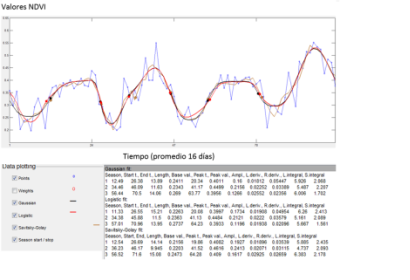Continuing progress in studies and advancing in the area of drought monitoring in agricultural areas, the Remote Sensing Group of the Center for Research and Development in Geographic Information of IGAC (CIAF) in Colombia, has been analyzing time series of the Normalized Differenced Vegetation Index (NDVI) based on MODIS data obtained by NASA's Terra satellite.
Specifically, the researchers used MOD13Q images to obtain historical data on the severity and duration of drought in different regions of the country.
To automatically determine the maximum and minimum NDVI values, and also to identify the start and the end of the seasonal periods of pastures, CIAF uses the freely available software TIMESAT. This programme allows to adjust three statistical models, Gaussian, logistic and Savitsky-Golay, to analyze the seasonality of any spectral index calculated. In this way, the team looks to model future climate anomalies such as El Niño and its possible impact on the agricultural sector.
The image above shows a time series of NDVI average from 2001-2004 for clean pasture areas in the Atlántico region, Magdalena and Bolivar (northern Colombia). This time period recorded an El Niño event from May 2002 (Time 30) to March 2003 (Time 60).
IGAC is the Agustin Codazzi Geographic Institute of Colombia and host to a UN-SPIDER's Regional Support Office.

